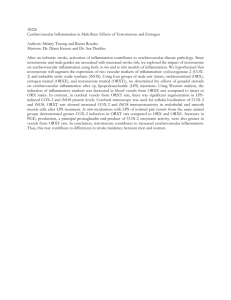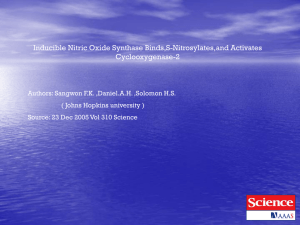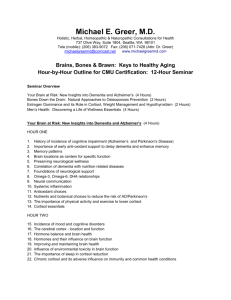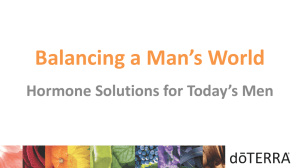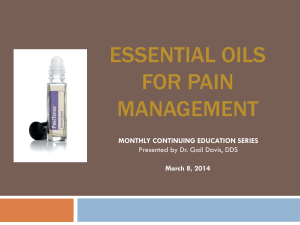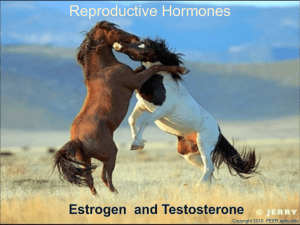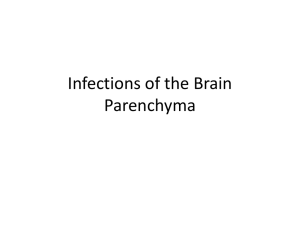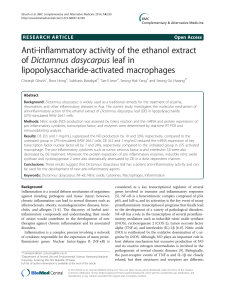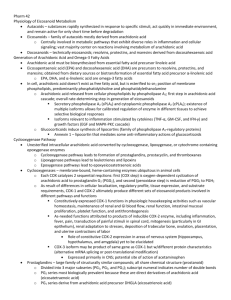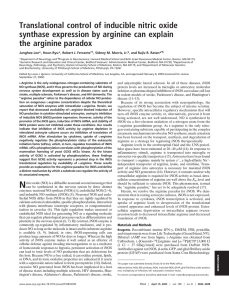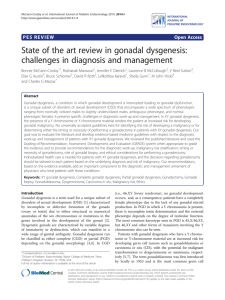Recently, there has been a focus on stroke incidence and gender
advertisement
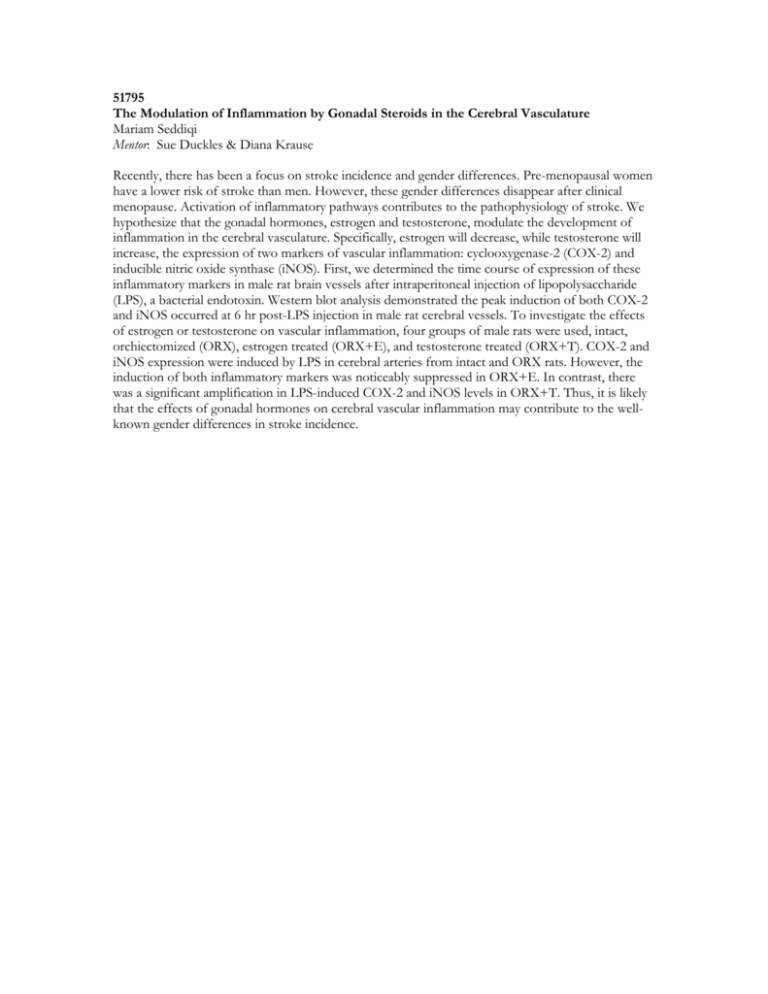
51795 The Modulation of Inflammation by Gonadal Steroids in the Cerebral Vasculature Mariam Seddiqi Mentor: Sue Duckles & Diana Krause Recently, there has been a focus on stroke incidence and gender differences. Pre-menopausal women have a lower risk of stroke than men. However, these gender differences disappear after clinical menopause. Activation of inflammatory pathways contributes to the pathophysiology of stroke. We hypothesize that the gonadal hormones, estrogen and testosterone, modulate the development of inflammation in the cerebral vasculature. Specifically, estrogen will decrease, while testosterone will increase, the expression of two markers of vascular inflammation: cyclooxygenase-2 (COX-2) and inducible nitric oxide synthase (iNOS). First, we determined the time course of expression of these inflammatory markers in male rat brain vessels after intraperitoneal injection of lipopolysaccharide (LPS), a bacterial endotoxin. Western blot analysis demonstrated the peak induction of both COX-2 and iNOS occurred at 6 hr post-LPS injection in male rat cerebral vessels. To investigate the effects of estrogen or testosterone on vascular inflammation, four groups of male rats were used, intact, orchiectomized (ORX), estrogen treated (ORX+E), and testosterone treated (ORX+T). COX-2 and iNOS expression were induced by LPS in cerebral arteries from intact and ORX rats. However, the induction of both inflammatory markers was noticeably suppressed in ORX+E. In contrast, there was a significant amplification in LPS-induced COX-2 and iNOS levels in ORX+T. Thus, it is likely that the effects of gonadal hormones on cerebral vascular inflammation may contribute to the wellknown gender differences in stroke incidence.
